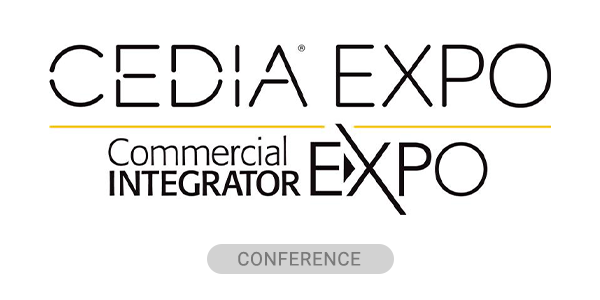The convergence of broadcast and pro AV isn’t theoretical — it’s operational. Today’s integrators are being asked to deliver systems that meet the precision demands of broadcast while remaining flexible, scalable and cost-effective enough for AV environments. That shift is reshaping not just workflows, but the tools themselves, including cameras.
Modern PTZ cameras are at the heart of this convergence. What were once backup gear for inaccessible shots have now become the primary camera types across studios, stadiums, lecture halls and meeting spaces. This transformation didn’t happen overnight — it’s the result of rising expectations, smarter standards and a new generation of hardware built to bridge both worlds.
IP Protocols Driving a Common Infrastructure
One of the clearest signals of convergence is the mainstream adoption of IP-based production standards. SMPTE ST 2110 is entrenched in high-end broadcast facilities, while AV systems have leaned on protocols like Dante AV and NDI to simplify integration and signal routing.
Among those, NDI continues to evolve with a broader set of features that appeal to pro AV deployments. The recent release of NDI 6.2 introduced HDCP support, enabling the secure transport of protected content over the network — an important development for environments like higher education, enterprise presentation and signage where content protection is a requirement. It’s just one example of how protocol development is adapting to cross-sector demands.
The reality for integrators is that multi-protocol compatibility is no longer a nice-to-have feature — it’s essential. Cameras that can output SDI, HDMI and multiple low-latency IP streams simultaneously offer flexibility for hybrid deployments and future scaling.
Camera Motion Matters — Everywhere
As PTZ cameras have moved from auxiliary roles into primary ones, their mechanical systems have become just as important as their imaging specs. Whether tracking a pastor, framing a panelist, or sweeping across a soccer pitch, motion quality directly impacts the production value, and viewer perception.
In broadcast, performance expectations are high: pans must be smooth, transitions clean, and presets precise. In AV, the demand is equally critical but different — noise must be minimal, movement must be discreet and reliability must be long-term. This is where camera engineering makes a big difference. Integrators in the pro AV space are increasingly evaluating cameras based on motor performance, control latency and internal firmware, not just output formats.
4K and HDR Are No Longer Broadcast-Only
Expectations around image quality have risen across the board. Stakeholders in education, corporate AV, worship and government now expect production-level visuals: 4K60, wide dynamic range and clean color reproduction. Fortunately, camera manufacturers have responded with mid-market PTZs that rival studio gear in specs without the studio price tag.
These advancements are part of a broader trend: PTZs aren’t just filling production gaps anymore, they’re leading the way. Compact, remotely operable and IP-native, they’re being deployed in places traditional broadcast cameras never could, without compromising quality.
Built-In Streaming Redefines System Design
Today’s PTZs are more than just capture devices. With native support for protocols like SRT, RTMP, Dante AV and NDI, many are functioning as full contribution encoders. This eliminates the need for dedicated encoding hardware and simplifies workflows for hybrid or remote production.
Whether you’re running a decentralized event with remote switching, feeding a livestream from a campus auditorium or patching in a remote speaker, having smart endpoints that manage video and audio transport directly from the camera saves time, rack space and support resources.
What Integrators Should Be Watching
As systems grow more complex and expectations rise, here are a few considerations to guide smart camera selection:
- Prioritize multi-output flexibility: SDI, HDMI, and multiple low-latency IP streams in a single unit opens hybrid infrastructure design.
- Scrutinize motion systems: Quiet, smooth and accurate pan/tilt performance should be as much a buying criterion as resolution.
- Match imaging to modern expectations: 4K60, dynamic range, and low-light performance are no longer limited to broadcast clients.
- Lean into network-native gear: Cameras that support direct streaming and remote control simplify deployment in hybrid and remote environments.
The Innovation is in the Middle
There’s a misconception that “mid-market” equipment means compromise. The truth is, in today’s rapidly changing markets, the middle is where the most important innovations are happening. Cameras that balance cost-efficiency with professional-grade specs are now enabling broadcasters and AV professionals to build smarter systems — without trade-offs.
This is what convergence between the broadcast and pro AV sectors really looks like: tools designed to meet the needs of both worlds, and integrators empowered to design high quality, cost-effective systems that are resilient, flexible and ready for whatever comes next.
Sapan Doshi is product manager at Bolin Technology.













